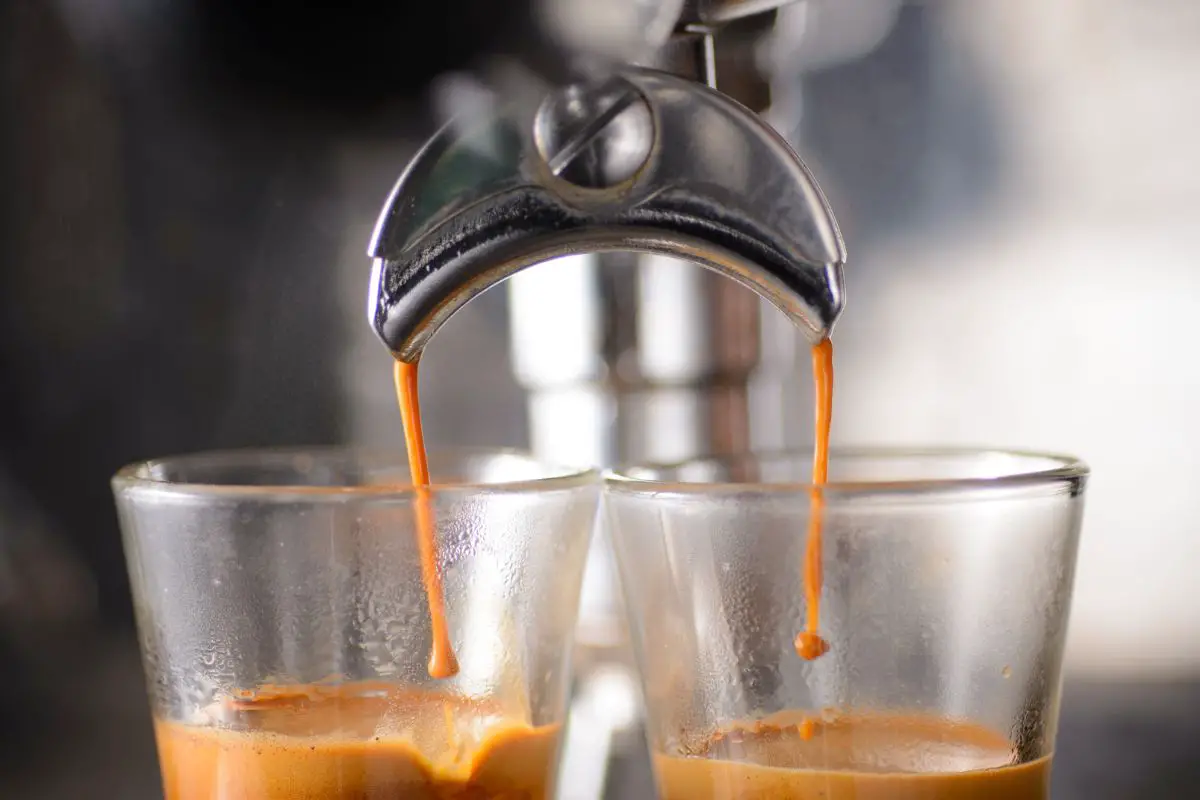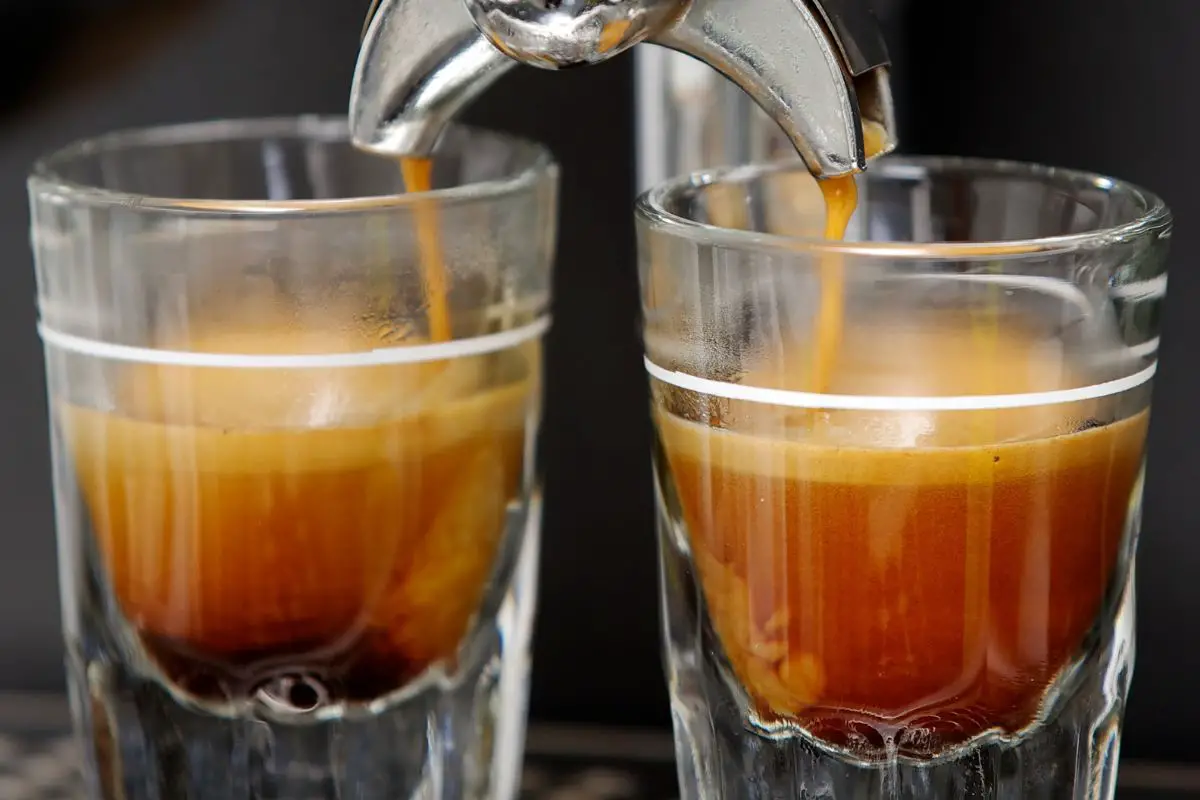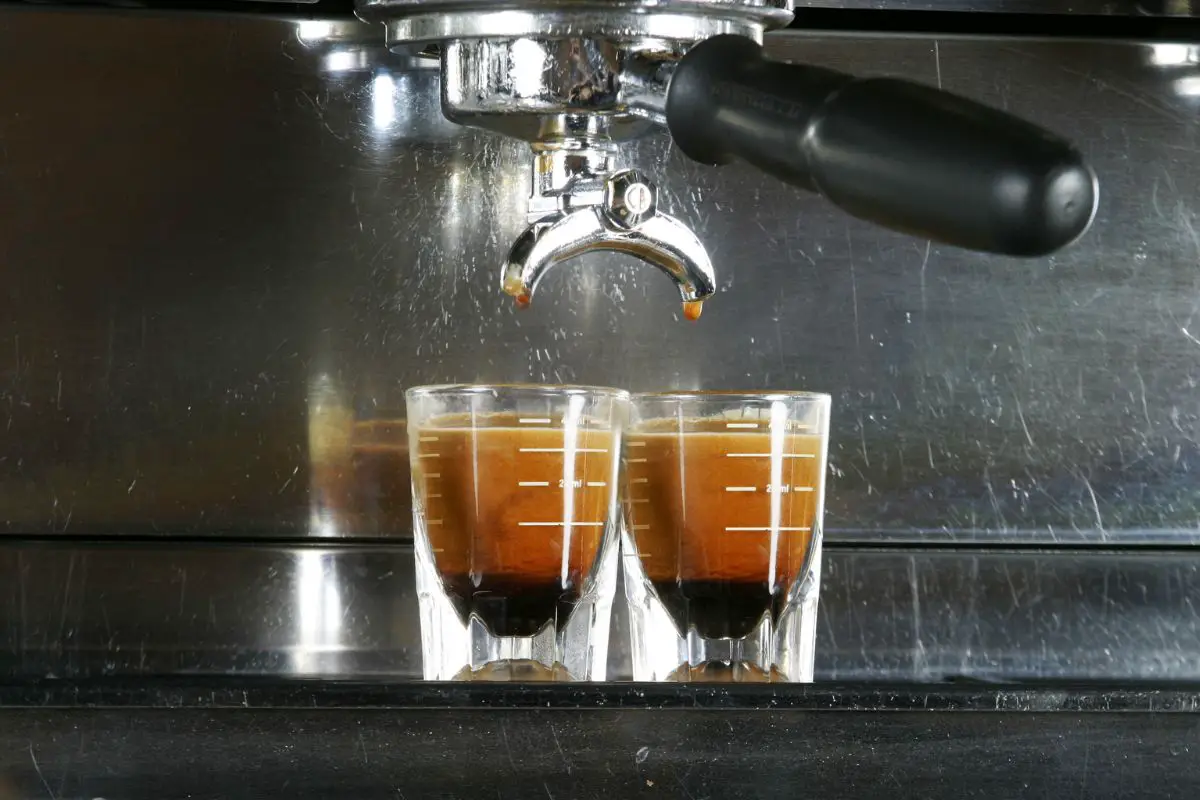According to research, double espresso is one of the most popular coffee beverages consumed worldwide. Its bold flavor and aromatic properties make it an appealing choice for coffee enthusiasts. However, for individuals concerned about their caffeine intake, it is essential to understand the amount of caffeine present in a double espresso.

Studies reveal that a standard double espresso typically contains approximately 120 milligrams of caffeine. This statistic is important to consider as it provides insight into the potential effects the beverage may have on individuals. By understanding the caffeine content, consumers can make informed decisions regarding their coffee consumption and ensure they stay within recommended caffeine limits.
In this article, we will explore how caffeine is extracted from coffee beans, delve into the specific caffeine content of a double espresso, compare it to other coffee beverages, and discuss the potential effects of caffeine on the body. Additionally, we will provide tips on enjoying a double espresso while prioritizing safety.
By the end, readers will have a comprehensive understanding of the caffeine content in a double espresso and be equipped to make informed choices regarding their coffee consumption.
Key Takeaways
- A standard double espresso contains approximately 120 milligrams of caffeine.
- Factors like serving size, bean type, and brewing method influence caffeine content in a double espresso.
- On average, a double espresso shot contains around 63 milligrams of caffeine.
- Double espresso has similar caffeine content as a standard cup of brewed coffee.
The Basics of Double Espresso
The caffeine content in a double espresso is a fundamental aspect to understand when exploring the basics of this particular type of coffee preparation.
A double espresso is a type of coffee beverage that is made by extracting a small amount of water through finely ground coffee beans under high pressure. The result is a concentrated and intense coffee shot that is typically served in a small cup.
When it comes to caffeine content, a double espresso is known for its high concentration of caffeine. On average, a double espresso contains about 60-80 milligrams of caffeine. This amount can vary depending on factors such as the type of coffee beans used, the extraction process, and the size of the serving.
It is important to note that the caffeine content in a double espresso is significantly higher compared to a regular cup of coffee. While a typical cup of coffee contains around 95 milligrams of caffeine, a double espresso packs a punch with its concentrated caffeine content.
Understanding how caffeine is extracted during the espresso preparation process is essential to comprehending why a double espresso contains a higher caffeine content. This will be further explored in the following section.
How Caffeine is Extracted
One intriguing fact about the process of extracting caffeine is that it is primarily done using a solvent such as ethyl acetate or supercritical carbon dioxide. These solvents are used because they have the ability to selectively dissolve caffeine from the coffee beans while leaving behind other compounds. The process starts by soaking the coffee beans in the solvent, which allows the caffeine to be extracted. Once the caffeine has been dissolved in the solvent, it is separated from the solvent through various methods, such as evaporation or filtration.
To emphasize the importance of this extraction process, consider the following table:
| Solvent Used | Extraction Efficiency |
|---|---|
| Ethyl Acetate | 97% |
| Supercritical Carbon Dioxide | 99.9% |
| Water | 80% |
| Methylene Chloride | 99.7% |
| Trichloroethylene | 99.6% |
As can be seen from the table, the choice of solvent can greatly impact the efficiency of caffeine extraction. This is important from a safety perspective, as higher extraction efficiency means less residual caffeine in the final product.
The next section will discuss the caffeine content in a double espresso, which is directly influenced by the extraction process.
Caffeine Content in Double Espresso
When it comes to the caffeine content in a double espresso, it is crucial to consider various factors.
Firstly, the amount of caffeine in a double espresso can vary depending on the size of the serving and the brewing method used.
Secondly, the type and quality of the coffee beans used can also influence the caffeine content.
Lastly, factors such as the duration of the brewing process and the water temperature can impact the extraction of caffeine.
Understanding these factors is essential for accurately determining the caffeine content in a double espresso.
How much caffeine is in a double espresso?

A double espresso typically contains a significant amount of caffeine. The exact caffeine content can vary depending on several factors, such as the size of the serving, the type of coffee beans used, and the brewing method. On average, a double espresso shot, which is typically around 2 ounces, contains approximately 63 milligrams of caffeine.
To put this into perspective, here are three items that can help you visualize the caffeine content in a double espresso:
- A double espresso contains roughly the same amount of caffeine as a standard 8-ounce cup of brewed coffee.
- It is equivalent to consuming one 12-ounce can of caffeinated soda.
- A double espresso has a caffeine content similar to that of a 2-ounce energy shot.
Understanding the caffeine content in a double espresso is important for those who desire safety and want to monitor their caffeine intake. Factors such as serving size, bean type, and brewing method can further influence the caffeine content in a double espresso, which we will explore in the next section.
Factors that can affect caffeine content
The caffeine content in a double espresso can be influenced by various factors, such as the size of the serving, the type of coffee beans used, and the brewing method, ultimately shaping the intensity of its invigorating effect.
The size of the serving plays a crucial role in determining the caffeine content. A standard double espresso typically contains around 60-80 milligrams of caffeine, but this can vary depending on the size of the cup and the amount of coffee used.
Additionally, the type of coffee beans used can affect the caffeine content. Robusta beans generally have a higher caffeine content than Arabica beans.
Furthermore, the brewing method can impact the caffeine extraction. Espresso machines that use high pressure tend to extract more caffeine than other brewing methods.
These factors highlight the importance of understanding the variables that can influence the caffeine content in a double espresso.
Transitioning to the next section, it is essential to compare caffeine levels across different coffee options to make informed choices.
Comparing Caffeine Levels
In comparing the caffeine levels, it is noteworthy that a double espresso contains significantly higher amounts of caffeine than other espresso-based drinks. While the exact caffeine content can vary depending on factors such as the size of the espresso shot and the type of coffee bean used, on average, a double espresso typically contains around 80 milligrams of caffeine. This is considerably higher than a single shot of espresso, which contains around 63 milligrams of caffeine.
Comparatively, a regular cup of brewed coffee typically contains around 95 milligrams of caffeine, making the double espresso a potent source of caffeine.
It is important to note that caffeine content can also vary depending on the brewing method and the type of coffee bean used. However, in terms of espresso-based drinks, the double espresso stands out for its higher caffeine concentration. This information is particularly relevant for individuals who are sensitive to caffeine or those who are looking to limit their caffeine intake. Understanding the caffeine levels in different espresso-based drinks can help individuals make informed choices about their coffee consumption.
With this understanding of the caffeine content in a double espresso, it is essential to explore the effects of caffeine on the body.
The Effects of Caffeine
Caffeine, a widely consumed stimulant found in various beverages, has a significant impact on the human body. Understanding the effects of caffeine is crucial for individuals who consume it regularly, as it can have both positive and negative consequences.
Here are three important effects to consider:
- Alertness and Energy Boost: Caffeine acts as a central nervous system stimulant, increasing alertness and reducing fatigue. It achieves this by blocking the action of adenosine, a neurotransmitter that promotes sleep and relaxation. As a result, individuals often experience improved focus, concentration, and a temporary increase in energy levels.
- Enhanced Physical Performance: Caffeine has been shown to improve physical performance in activities such as endurance exercise, team sports, and high-intensity workouts. It can increase muscle strength, reduce perceived exertion, and delay fatigue. However, the optimal dosage varies among individuals, and excessive consumption can lead to adverse effects like restlessness or increased heart rate.
- Side Effects and Withdrawal Symptoms: While moderate caffeine consumption is generally safe, excessive intake can cause side effects such as anxiety, insomnia, digestive issues, and increased heart rate. Additionally, regular consumption can lead to dependence and withdrawal symptoms when intake is suddenly reduced or stopped.
Understanding the effects of caffeine can help individuals make informed choices about their consumption.
Now, let’s explore how to enjoy your double espresso while minimizing potential risks.
Enjoying Your Double Espresso

When it comes to enjoying your double espresso, there are a few tips to savor its rich flavor. Firstly, take your time to appreciate the aroma before taking your first sip. This will allow you to fully immerse yourself in the experience.
Secondly, consider pairing your double espresso with complementary foods or desserts. The intense flavors of the espresso can be enhanced when enjoyed alongside something like a dark chocolate or a buttery croissant. Exploring these combinations can add a new dimension to your coffee experience.
Tips for savoring the flavor
To fully appreciate the rich and complex flavors of a double espresso, it is recommended to take small, deliberate sips, allowing the velvety liquid to envelop the palate and awaken the senses. This allows for the full range of flavors, from the initial bold notes to the subtle undertones, to be experienced and savored.
By sipping slowly, one can also better gauge the intensity of the espresso and adjust accordingly, ensuring a pleasurable and enjoyable experience. Additionally, paying attention to the temperature of the espresso can enhance the tasting experience. The warm, comforting sensation can complement the flavors and create a more satisfying experience.
By following these tips, coffee enthusiasts can fully appreciate the craftsmanship and intricate flavors of a double espresso.
Moving forward, let’s explore how pairing double espresso with food or desserts can further elevate the overall enjoyment.
Pairing double espresso with food or desserts
Pairing a robust and invigorating beverage with complementary culinary creations can heighten the overall sensory experience and add a touch of sophistication to one’s gastronomic indulgence. When it comes to pairing food or desserts with a double espresso, it is important to consider the flavors and textures that will complement and enhance the rich and intense taste of the espresso.
Here are five suggestions for pairing double espresso with food or desserts:
- Dark chocolate: The bitterness of dark chocolate pairs well with the strong flavor of the espresso, creating a harmonious combination.
- Almond biscotti: The crunchiness of almond biscotti complements the smoothness of the espresso, providing a delightful contrast in textures.
- Cheesecake: The creamy and slightly sweet taste of cheesecake balances the boldness of the espresso, resulting in a well-rounded flavor profile.
- Citrus fruits: The refreshing acidity of citrus fruits, such as oranges or lemons, can cut through the richness of the espresso, providing a refreshing and tangy contrast.
- Nuts: Whether it’s roasted almonds or hazelnuts, the nuttiness adds depth to the espresso’s flavor, creating a satisfying and complex pairing.
By considering these suggestions, coffee enthusiasts can elevate their double espresso experience by incorporating complementary flavors and textures, ensuring a pleasurable and well-balanced gastronomic adventure.
Frequently Asked Questions
Can I get the same amount of caffeine from a regular coffee as I would from a double espresso?
The caffeine content in a regular coffee varies, but on average, a double espresso contains more caffeine than a regular coffee. However, the exact amount of caffeine can depend on several factors such as the brewing method and the type of coffee beans used.
Does the type of coffee beans used affect the caffeine content of a double espresso?
The type of coffee beans used can affect the caffeine content of a double espresso. Arabica beans contain less caffeine than Robusta beans, with an average of 64-84mg and 125-150mg per shot respectively.
Is it safe to consume multiple double espressos in a day?
Consuming multiple double espressos in a day can lead to excessive caffeine intake. This may cause symptoms such as restlessness, increased heart rate, and difficulty sleeping. It is advisable to limit caffeine consumption for safety purposes.
Does the brewing time of a double espresso affect the caffeine content?
The brewing time of a double espresso does not significantly affect the caffeine content. The level of caffeine primarily depends on the amount of coffee used, with an average double espresso containing around 128 milligrams of caffeine.
Are there any health benefits associated with consuming double espressos regularly?
There is limited evidence to support any health benefits associated with consuming double espressos regularly. While some studies suggest potential positive effects on alertness and cognitive performance, excessive caffeine intake can lead to adverse effects such as insomnia, anxiety, and digestive issues.
Conclusion
Double espresso is a popular beverage known for its strong and rich flavor. It is made by extracting coffee under high pressure, resulting in a concentrated shot of coffee.
The caffeine content in a double espresso can vary depending on factors such as the type of coffee beans used and the brewing method. On average, a double espresso contains about 63 milligrams of caffeine. To put this into perspective, a regular cup of coffee contains around 95 milligrams of caffeine.
This statistic highlights the high caffeine concentration in a double espresso, making it a suitable choice for those in need of a quick energy boost.
Related articles:
Does Espresso Have More Caffeine Than Coffee